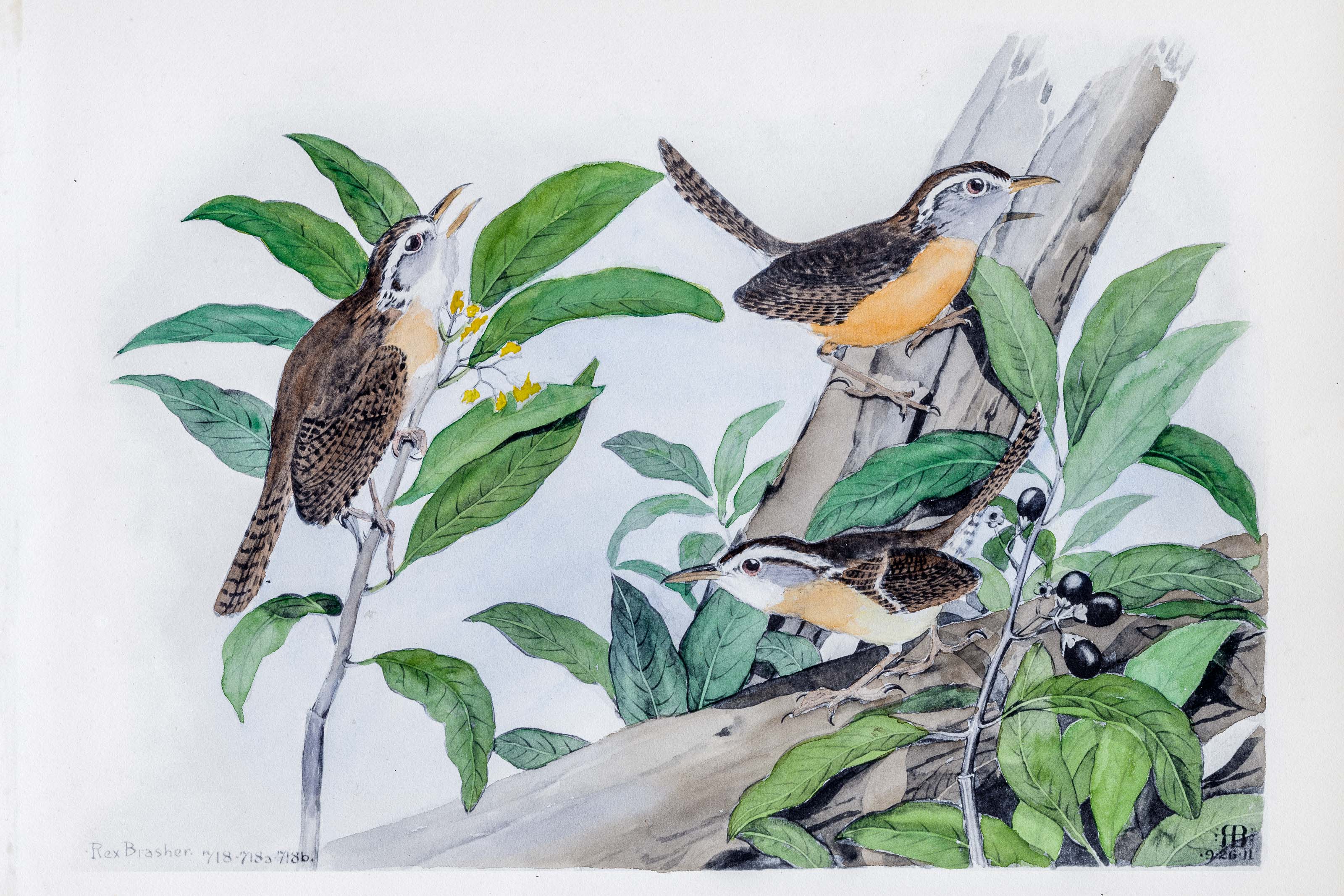
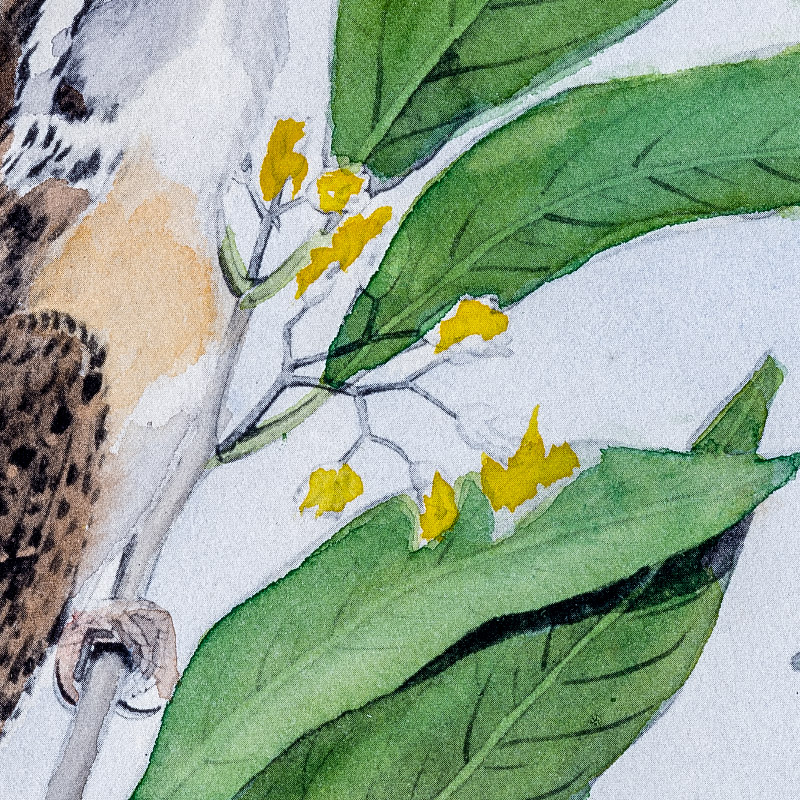
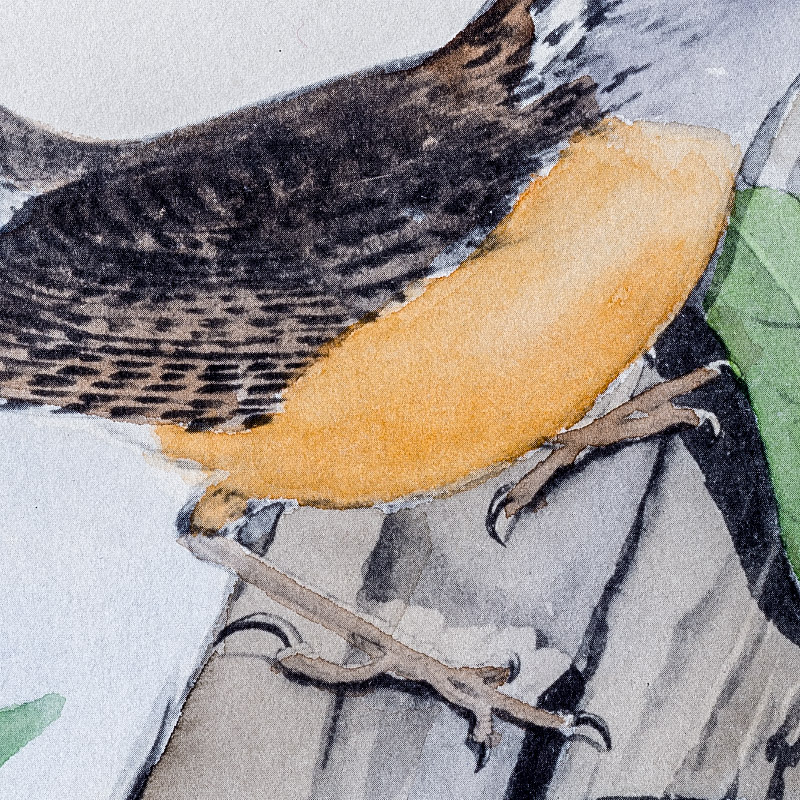
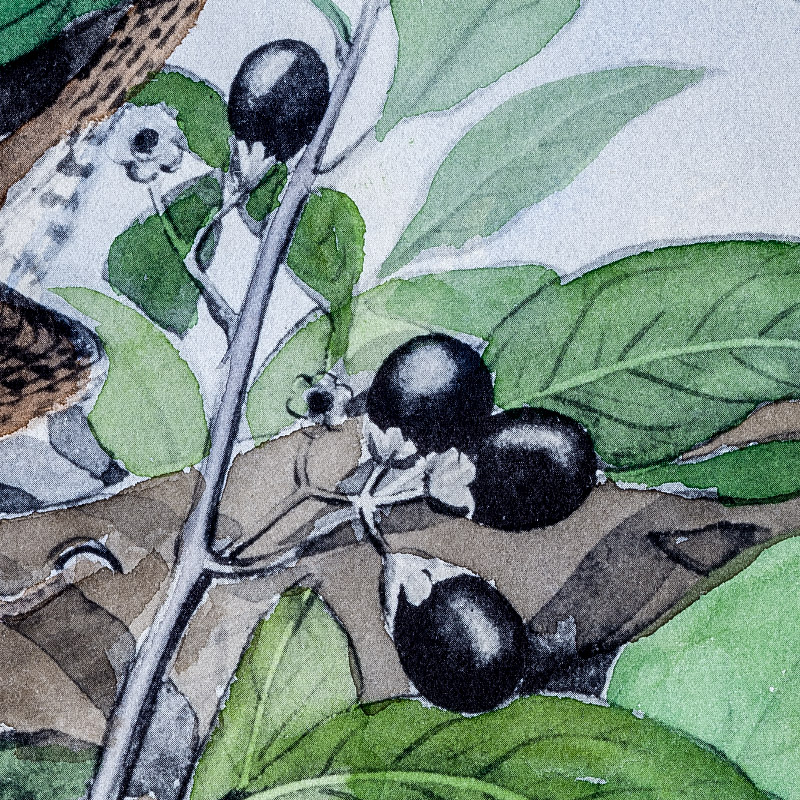
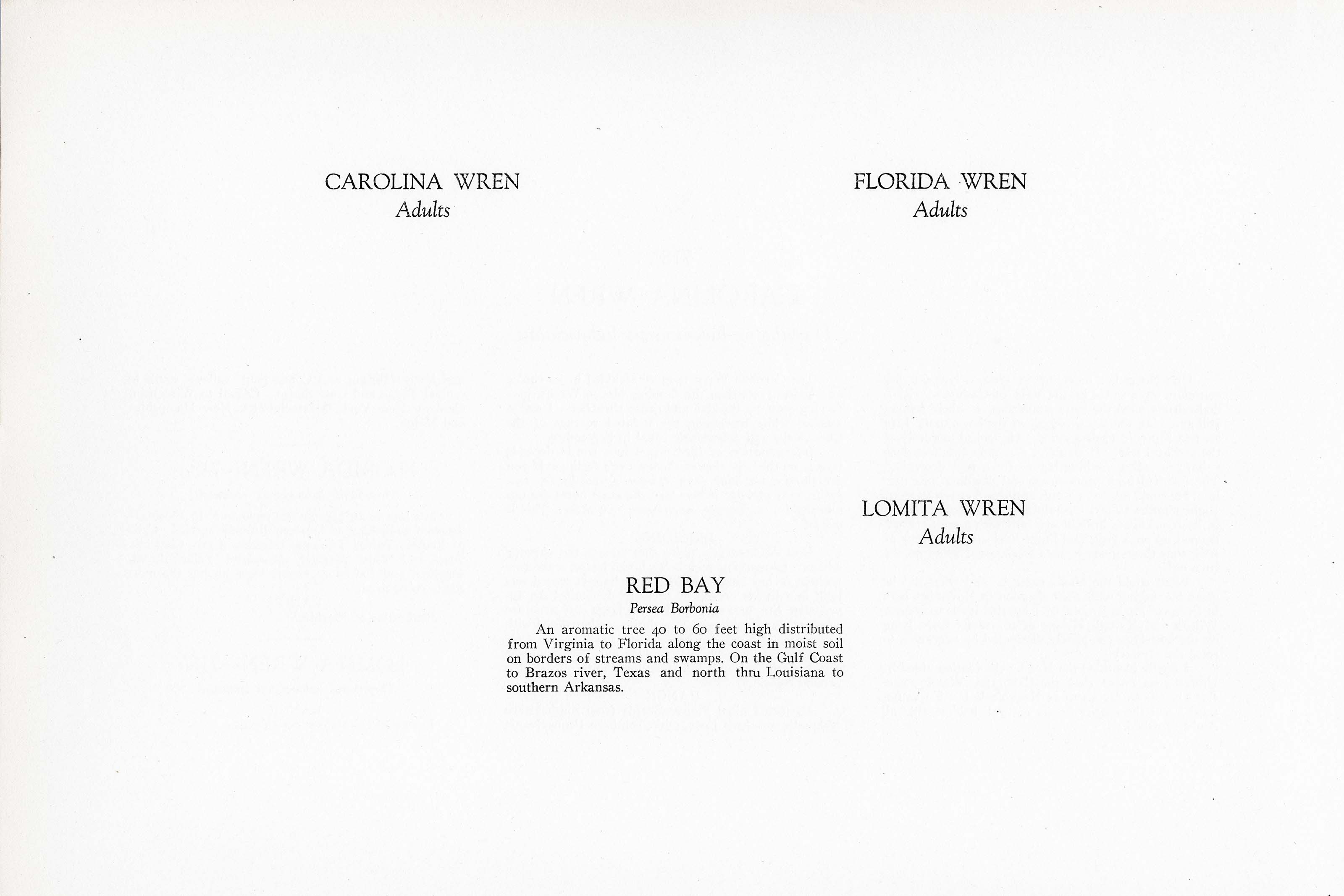
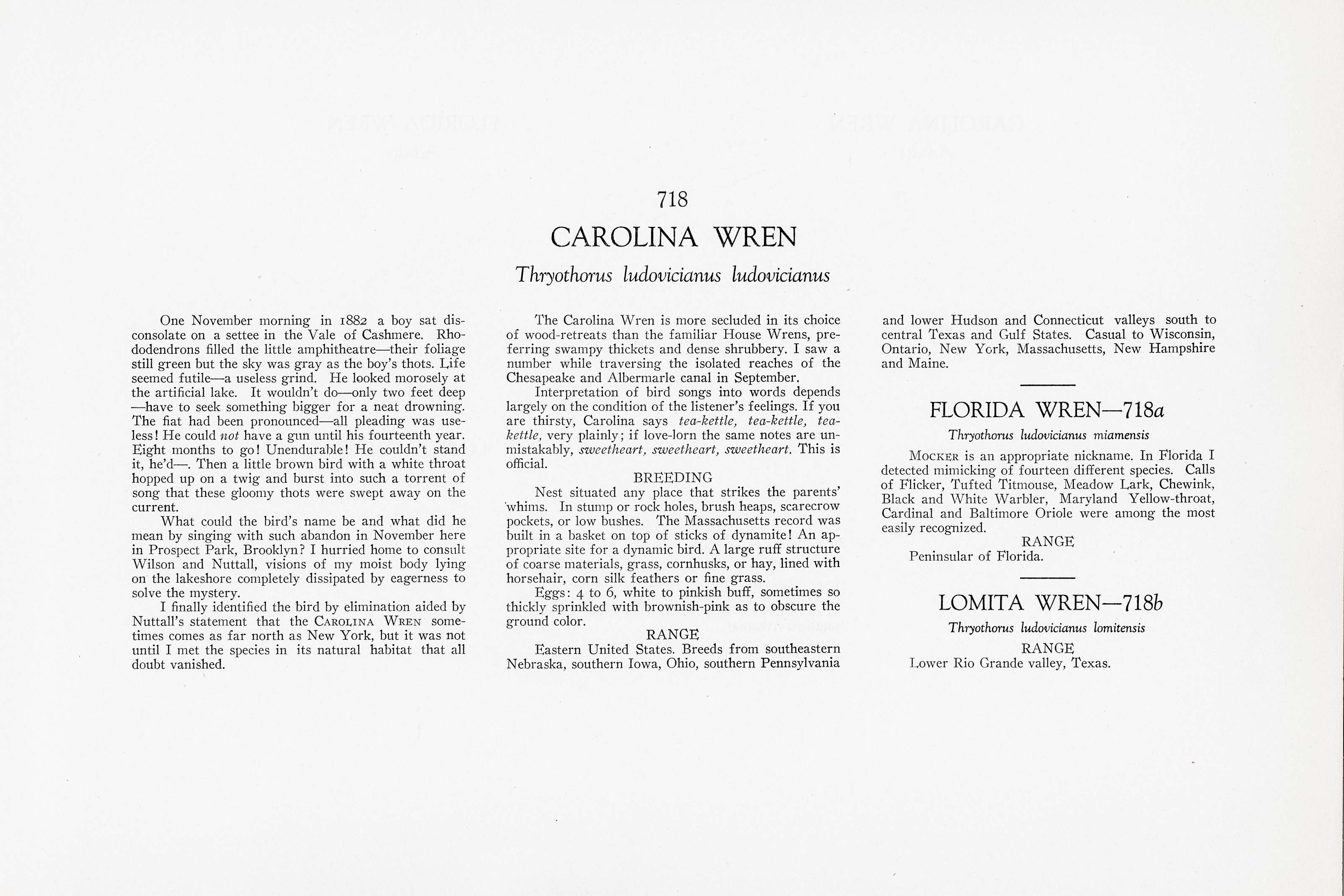

1911
1929
12
718-718a-718b
A team of dedicated board members, volunteers, and student interns has published every page in Volume 9. This volume includes 360 images of paintings and lyrical descriptions of birds, now available online for everyone to enjoy anywhere in the world. This is a monumental task. Each volume requires approximately 400 hours to photograph, edit, transcribe, catalog, and publish online. We need your support to complete this work.
If you're tech-savvy, have a good eye, are meticulous with details, and love structured data, please consider volunteering by emailing us at hello@rexbrasher.org.
We encourage all bird lovers and supporters to consider a monetary donation to support our mission to make Rex's work available for everyone. You can provide a one-time or recurring donation online.
One November morning in 1882 a boy sat disconsolate on a settee in the Vale of Cashmere. Rhododendrons filled the little amphitheatre — their foliage still green but the sky was gray as the boy's thots. Life seemed futile — a useless grind. He looked morosely at the artificial lake. It wouldn't do — only two feet deep — have to seek something bigger for a neat drowning. The fiat had been pronounced — all pleading was useless! He could not have a gun until his fourteenth year. Eight months to go! Unendurable! He couldn't stand it, he'd—. Then a little brown bird with a white throat hopped up on a twig and burst into such a torrent of song that these gloomy thots were swept away on the current.
What could the bird's name be and what did he mean by singing with such abandon in November here in Prospect Park, Brooklyn? I hurried home to consult Wilson and Nuttall, visions of my moist body lying on the lakeshore completely dissipated by eagerness to solve the mystery.
I finally identified the bird by elimination aided by Nuttall's statement that the CAROLINA WREN sometimes comes as far north as New York, but it was not until I met the species in its natural habitat that all doubt vanished.
The Carolina Wren is more secluded in its choice of wood-retreats than the familiar House Wrens, preferring swampy thickets and dense shrubbery. I saw a number while traversing the isolated reaches of the Chesapeake and Albermarle canal in September.
Interpretation of bird songs into words depends largely on the condition of the listener's feelings. If you are thirsty, Carolina says tea-kettle, tea-kettle, tea-kettle, very plainly; if love-lorn the same notes are unmistakably, sweetheart, sweetheart, sweetheart. This is official.
Nest situated any place that strikes the parents' whims. In stump or rock holes, brush heaps, scarecrow pockets, or low bushes. The Massachusetts record was built in a basket on top of sticks of dynamite! An appropriate site for a dynamic bird. A large ruff structure of coarse materials, grass, cornhusks, or hay, lined with horsehair, corn silk feathers or fine grass.
Eggs: 4 to 6, white to pinkish buff, sometimes so thickly sprinkled with brownish-pink as to obscure the ground color.
Eastern United States. Breeds from southeastern Nebraska, southern Iowa, Ohio, southern Pennsylvania and lower Hudson and Connecticut valleys south to central Texas and Gulf States. Casual to Wisconsin, Ontario, New York, Massachusetts, New Hampshire and Maine.
MOCKER is an appropriate nickname. In Florida I detected mimicking of fourteen different species. Calls of Flicker, Tufted Titmouse, Meadow Lark, Chewink, Black and White Warbler, Maryland Yellow-throat, Cardinal and Baltimore Oriole were among the most easily recognized.
Peninsular of Florida.
Lower Rio Grande valley, Texas.
An aromatic tree 40 to 60 feet high distributed from Virginia to Florida along the coast in moist soil on borders of streams and swamps. On the Gulf Coast to Brazos River, Texas and north through Louisiana to southern Arkansas.